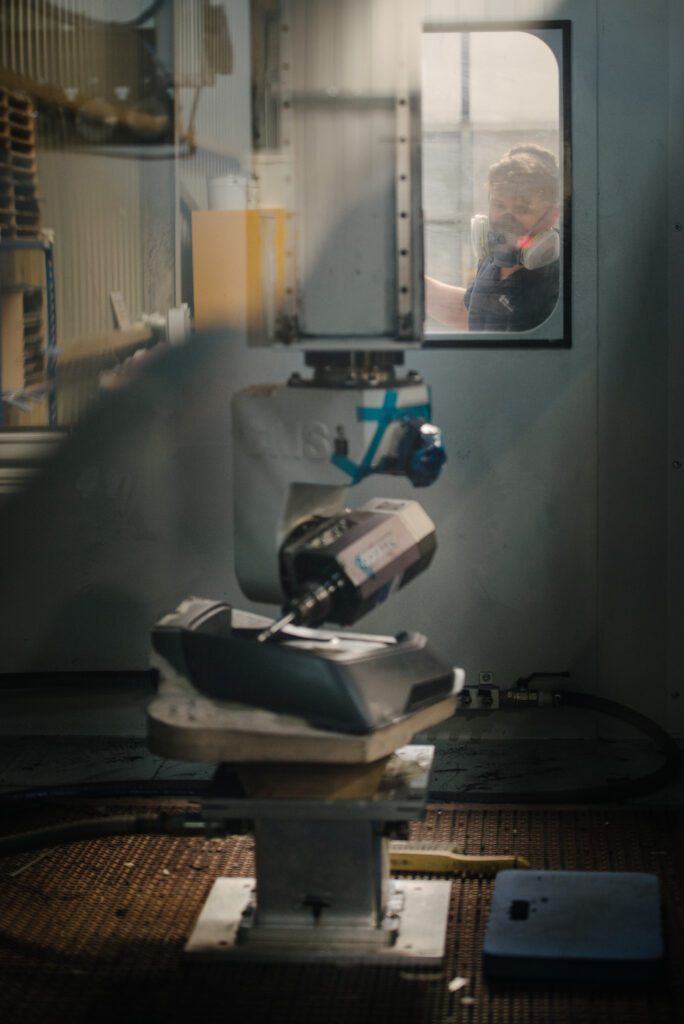At Piran Composites we already know how incredible composite materials are and we are passionate about their potential. Not only do they offer great design possibilities they are also stronger, lighter plus better for the environment producing fewer emissions. With constant innovation, we believe the future looks exciting for the future of composite materials and their applications. Find out why below.
Table of Contents
Future of Composite Materials
As we mention above, the future of composite materials is a promising one. With climate at the forefront of industry agendas worldwide, we are watching the automotive and aerospace sectors driving new developments. Electric cars, electric taxis, smarter transport options plus the need for enhanced aerospace lightweighting means the use for composite materials is widening. From Tesla to ZeroAvia, Vertical aerospace to renewable energy providers, boundaries are being pushed, dynamic developments are occurring daily and smart composites look set to stay.

1. Material Innovation
A key cog in the composite future, material innovation is at often at the forefront of composite trends. Newer, more lightweight and recyclable options are constantly being developed without negatively impacting on their load bearing capabilities. In addition, now composite materials are in the limelight, appearance is becoming more important with customers wishing to tailor the aesthetics of their chosen product based on project and design. With such rapid enhancement, it won’t be long before traditional materials are replaced altogether.
2. Smart Composites
Also referred to as ‘reactive materials’, smart composites are modern and diverse. Applied to a range of industries, smart composites often use thermoset or thermoplastic plastics as part of their matrix. They are able to handpick properties such as heat, chemical and weather resistance simply by selecting the correct appropriate matrix material. The end result? A completely bespoke smart composite which is intelligent enough to understand environmental conditions and react in the required way. Whether it’s differences in temperature or light, smart composites are able to respond to environmental changes without the need for any other electrical or remote control.
3. Lightweight Composites
Being able to produce lightweight composites is absolutely crucial for many industries which rely on weight for a number of reasons. As their name suggests, lightweight composites are purposely designed to be less heavy which is a critical property for sectors such as aerospace, transportation and infrastructure. Thanks to advanced manufacturing techniques, lightweight composites are easy to handle, durable, easy to install and strong. They can also reduce project costs and help ensure adherence to regulatory requirements.
3.1 Automotive Lightweighting
Advanced automotive lightweighting composite materials are significantly improving product design resulting in safer and sleeker solutions. With the pursuit for more fuel-efficient cars the search for better, smart composite materials is continuing at a rapid pace. To answer the cry for automotive lightweighting we are seeing sophisticated developments to complex materials and component models.
As the automotive industry seeks to reduce its carbon footprint, composites are helping to show that nature doesn’t have to end where the road starts.
3.2 Aerospace Lightweighting
An essential part of aerospace design is weight, something that must take off absolutely has to be as light as possible! It is aerospace lightweighting where composite materials really come into their own and there have been extensive explorations into options available. With the aviation industry significantly contributing to the global warming phenomena there has long been research into ways to reduce aviation emissions. The main focus is on improving energy efficiency whilst reducing fuel consumption and the best way to do this is by reducing the mass of the aircraft. A lower mass means less lift focus and thrust during flights which can see incredible improvements, for example, for the Boeing 787 a 20% weight saving saw a 12% improvement in fuel efficiency.
As well as improving carbon footprint, aerospace lightweighting also results in better fight performance as well as better safety performance – it’s a winner all round!

4. Bio-based Composites
Bio-composites is a term used to describe composite materials that contain one or more naturally derived materials. This can be part of the matrix or reinforcement phase or both. With the pressing need for environmental and sustainable motivated efforts, the desire for bio-based composites is growing, particularly in the infrastructure and construction sectors. Bio-based composites will ultimately provide an alternative to conventional, non-renewable synthetic materials such as glass and carbon reinforced composites.
However, this is very much a new and emerging development with much to work on. Bio-based composites have faced setbacks such as moisture resistance, issues with supply logistics, thermal instability and poor electrical properties to name a few. With continuing advancements in this burgeoning material, it will be interesting to watch developments over the next few years.
Future of Composite Applications
With the ability to produce bespoke end-products which are adaptive, intelligent, strong, lightweight and cost effective, the future of composite applications in some ways feels like the beginning. Their diversity means that they can be applied to an incredibly wide range of industries and sectors from household goods to dentistry, space, aerospace, aviation, construction and more. With the use of biomaterials being explored, composite materials are continuing to contribute to our planet’s efforts to tackle climate change. Watch this space, it’s set to be life changing for us all.
1. Advanced Manufacturing Techniques
As we discussed above, innovation in composite materials is ongoing with advanced manufacturing techniques being developed regularly. New technology has the power to completely transform the industry by introducing new advanced manufacturing techniques or completely shaking up existing ones. Advanced robotics are now more versatile with AFP (automatic fibre placement) uses one of these said robots to place material allowing AFP to build components one layer at a time. This enables the creation of highly-customised parts whilst allowing the operator more control over component fabrication. This in turn sees an increase in speed, reducing material waste and costs whilst ensuring uniformity.

2. Infrastructure and Construction
Helping to build a better future for our planet, quite literally, composite applications in the infrastructure and construction industry are transforming the way we build and live. Composite materials are able to reduce construction times whilst saving money in numerous ways. As an example, composite materials are able to help create smaller, lighter weight bridges by eliminating the degradation of rebar-reinforced concrete, which is often at the heart of bridge infrastructure problems. Composite materials produce a more resilient end product which will last longer too.
Closer to home, our own decking and cladding is generally made from composite materials using a mixture of recycled timber and plastics. This has altered the way we view homes and commercial properties, reducing maintenance time and costs. It also removes the need to pressure treat decking, using harmful chemicals, again ensuring the environment is protected. Composite materials are basically revolutionising the infrastructure and construction industries making our world a better place.
3. Additive Manufacturing
Producing complex composite structures using traditional methods can be highly time consuming not to mention challenging. Advanced manufacturing techniques such as additive manufacturing, enable the fabrication of internal features and graded material compositions which are often tricky to achieve through traditional manufacturing processes.
Recent advances in additive manufacturing for composites includes the use of feedstock materials such as continuous fibres, nanoparticles and functional fillers. Each of these significantly improve the mechanical, thermal and electrical properties of printed composites whilst greatly expanding the design possibilities and performance capabilities.
4. 3D Printing with Composites
Dubbed ‘the next big thing’ 3D printing opens up a world of possibilities for the composite future. Predicted to explode into a billion pound industry, composite 3D printing may be a young technology but it is one with a huge potential.
3D printing with composites allows for streamlining of processes, reducing the cost of traditional composite manufacturing which is one of the key drivers in the growth of composite 3D printing. As the manufacturing process can be totally automated, 3D printing is set to play a huge role in the composite future.
Summary
The future trends in composite materials and applications present an exciting landscape of possibilities, and Piran Advanced Composites are committed to develop and provide the highest quality of advanced composites. At Piran, we understand that staying at the forefront of technological advancements is pivotal in delivering the highest quality products and service. As the industry progresses with cutting-edge manufacturing techniques, bio-based materials, and smart composites, our dedication to adaptation and innovation remains steadfast. Get in touch with our team to learn more about how Piran is adopting to the future.


